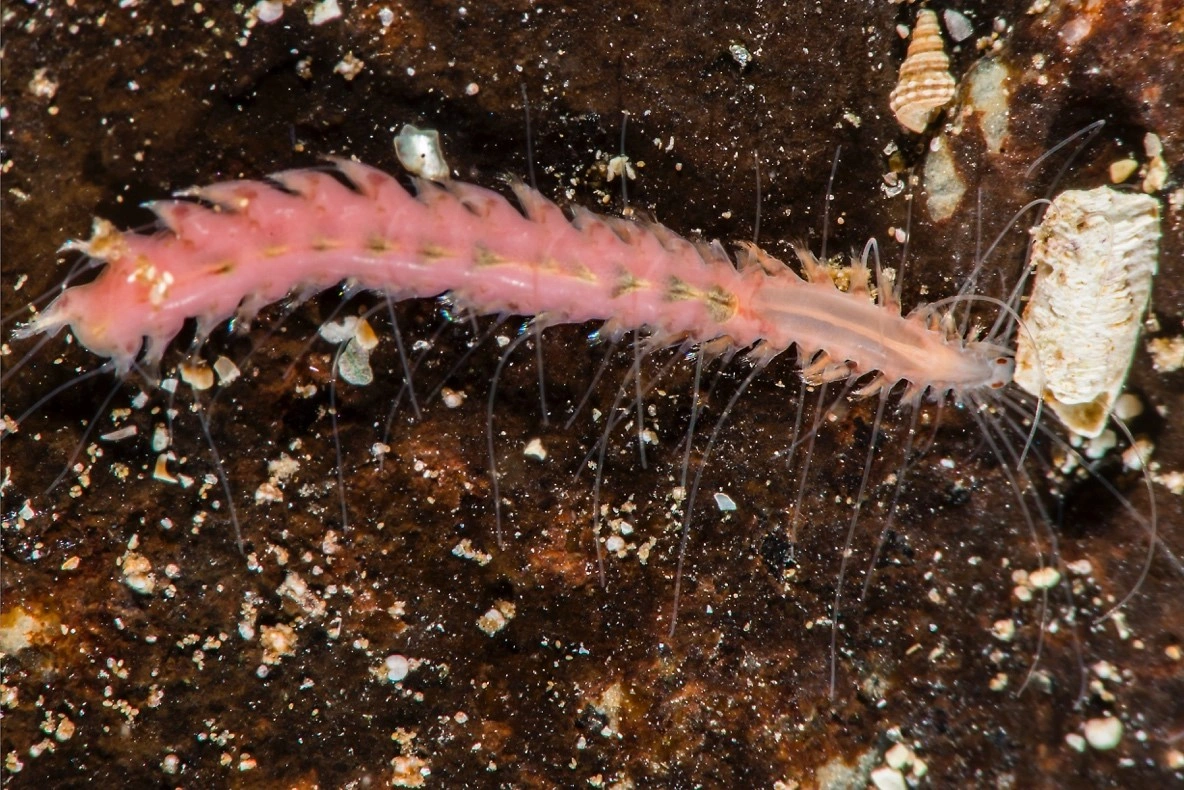Psamathe fusca
Psamathe fusca
This is a common species of Hesionidae in shallow waters in Norway and it is found on hard substrates and among shell gravel.
- Innhold
- Measurements
- Characteristics
- Look-alikes
- Biology, ecology and behaviour
- Habitat
- Recommended citation
Measurements
Up to 3 cm long with at most 65 segments.
Characteristics
Living specimens lack distinct coulour pattern but have a yellowish to orange-red ground colour. Psamathe fusca is similar to other species of Hesionidae but can be recognised by the lack of a median antenna, its dark red eyes, palps with bluntly rounded distal ends and because the first four segments only have a long cirri but no parapodia nor chaetae.
Hesiospina aurantiaca
Look-alikes
It is similar in general appearance to some Hesionidae species also reported in Norwegian waters. The lack of a median antenna is only shared with Nereimyra spp., Syllidia armata and Hesiospina aurantiaca. The first four segments with only long cirri are exclusively shared with H. aurantiaca, while Nereimyra and S. armata have three segments only with long cirri. Psamathe fusca can be distinguished from H. aurantiaca in the eye colour, which is dark red in P. fusca and orange red in H. aurantiaca, and in the shape of the palps, which are blunt in P. fusca and pointed in H. aurantiaca. In addition, H. aurantiaca has a pair of single hook-like chaetae in median segments, associated to their dorsal cirri while Psamathe fusca lacks this type of chaetae.
Prostomium of Hesiospina aurantiaca (left) and Psamathe fusca (right).
Biology, ecology and behaviour
Nothing is known about reproduction or feeding strategies.
Habitat
Psamathe fusca lives in shallow waters on hard substrates and among shell gravel.
Recommended citation
Nygren A. Psamathe fusca Johnston, 1836. www.artsdatabanken.no/Pages/313100. Downloaded <year-month-day>.


